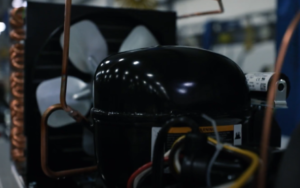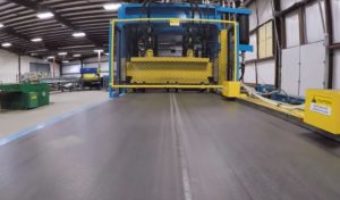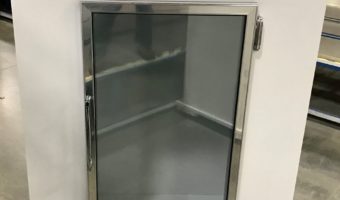Have you ever wondered how refrigeration works? Wonder no longer! Keep reading for a crash course in the science of keeping things cold.
Spoiler Alert: It’s Not About Cold… It’s About Heat
When we hear “refrigeration,” we think “make things cold.” Actually, this is a common misconception. To keep things cold, it’s not about adding cold air. The law of thermodynamics makes that an impossibility.
Rather, to keep your ice from becoming water and ice cream from becoming soup, we need to remove heat.
If you think back to high school science class for a minute, remember that heat is energy. We can’t destroy it and can’t get rid of it. So, we need to move it, transfer it, or transform it.
Not only can we not destroy it, we need to remember the second law of thermodynamics, which says that hot moves to cold, never the other way around.
So, we can make a space warm by adding heat. Or we can make a space colder by moving its warmth to a colder area, or material.
Finally, temperature, like water, will always seek equilibrium. Meaning, that the warm will keep warming the cold until they’re the same temperature.
How Heat Moves
There are three ways that heat can transfer out of a space.
First, conduction – this is when two things touch and the heat transfers through that contact. Like holding hands.
Second, convection – this is when warm molecules hitch a ride on another substance, like gas or water, that’s moving between the warm space and the cold space. This is what convection ovens rely on.
Third, radiation – this is when heat cozies up to light and lets the light do the transfer of energy. This is why we get hot when we stand out in the sun.
These three tactics form the building blocks behind refrigeration: whether it be an Ice Merchandiser or Walk-In Cooler or Freezer.
How Refrigeration Works
So now we know that heat needs to go somewhere else and we understand how it can do so. But what does this look like in a real temperature-controlled storage solution?
Once upon a time, iceboxes were the latest technology. These simple fridges used ice and let the warm air in the box melt said ice. The resulting water would drip out of the icebox, leaving cold air behind.
Since then, we’ve advanced.
It all starts with the compressor. The compressor’s job is to take the refrigerant gas and raise its pressure and temperature.
Then, the gas is pushed into the condenser coils. The condenser releases the heat out to the outside of the unit before it can ruin your product! During this stage, the refrigerant changes from gas to a gas/vapor, then finally condenses back into a liquid.
Now, a flow control device or expansion valve lets this liquid back into the unit’s evaporator system.
The evaporator system, at its most basic, allows the refrigerant to absorb all the heat from inside the unit and the cycle repeats.
It’s the same basic process as an ice box but now we don’t have to rely on melting ice, we can keep recycling the cool air by playing with two different pressure conditions.
Refrigerant – The Key Component
The “secret” ingredient that’s not so secret is called “refrigerant.” This is in every cooler and freezer and will exist either as a liquid or a vapor, depending on where it’s at in its journey.
The refrigerant is what runs between the compressor, condenser, expansion valves and evaporator.
As the liquid refrigerant in the evaporator absorbs heat, it starts to boil. As it boils, it becomes a vapor/gas, which causes the cooling effect. As the refrigerant gas is returned to the compressor it is compressed and reaches temperatures of up to 225 degrees Fahrenheit, as it leaves the compressor. Now, the vapor/gas refrigerant must be condensed back into its liquid state before it starts its journey again.
In Leer Ice Merchandisers, we’re transitioning to R290 Refrigerant. Read about how eco-friendly refrigerant works!
Now, if you’re buying a new Ice Merchandiser or Walk-In, do you need to know all this? Maybe. But if you’re looking for more information, we can answer all the big freezer questions you have.
Interested in learning more about our temperature-controlled storage solutions? Contact us today.
_________________________________________________________________
If you enjoyed this blog, subscribe to our temperature-controlled storage solutions newsletter!




